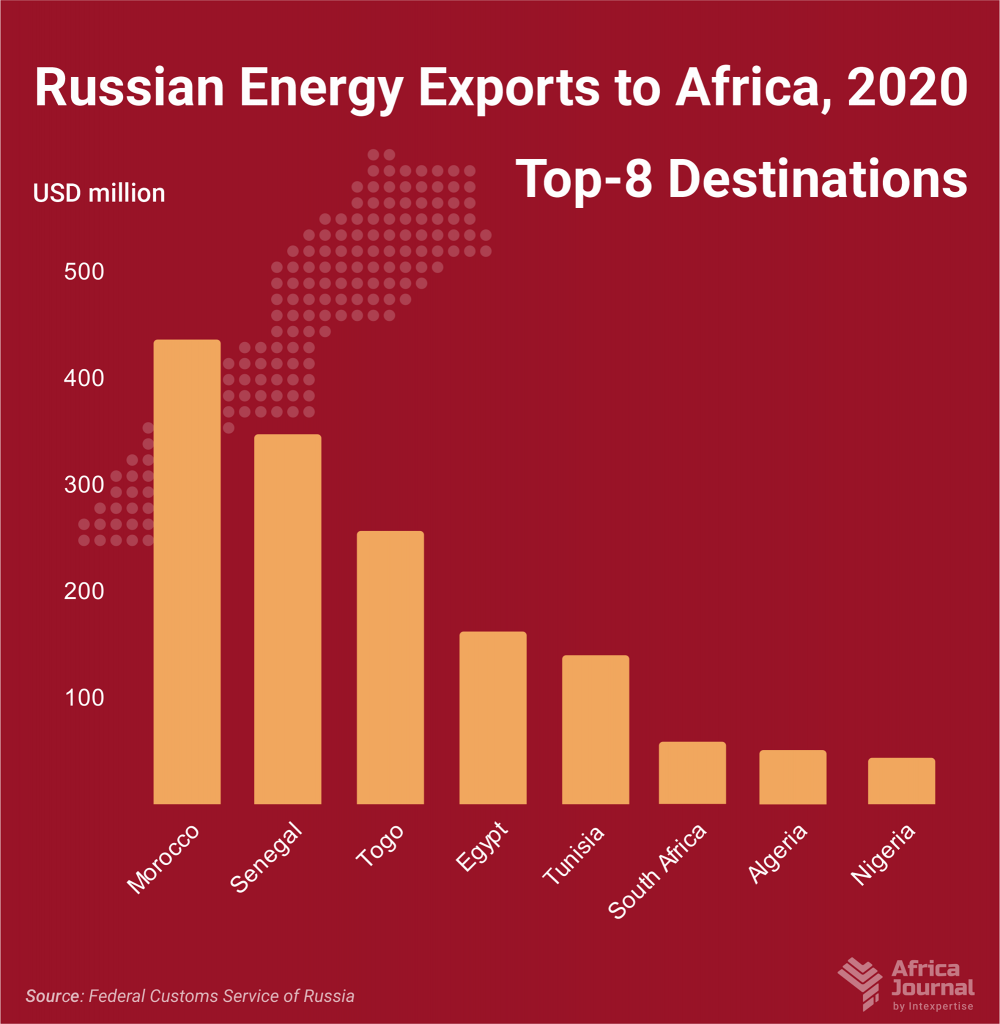
Russian energy exports to Africa in 2020 amounted to $1.5 billion and mainly consisted of black coal, oil and petroleum products.
According to the Federal Customs Service of Russia, exports to Africa accounted for 12% of total Russian energy exports.
Petroleum products and black coal, as well as arms, has historically accounted for about 70% of Russian exports to Africa. Almost a third ($0.4 billion) accounted for coal supplies to Morocco. Almost the same amount of commodities in value terms ($0.35 billion) was shipped to Senegal, where petroleum products are re-exported further to neighbouring countries, mainly Mali.
Third place is taken by Togo ($0.26), from where petroleum products are shipped to Nigeria, Benin and Burkina-Faso. The port of Lomé, capital of Togo, is relatively safe and is considered to be a logistically favourable site when compared to the other ports of the Gulf of Guinea.
Russia also ships significant amounts of petroleum products to Egypt, Tunisia, Algeria and South Africa. The countries of Eastern Africa are not among the buyers, as this region is predominantly oriented on exports from the Gulf countries.
Overall, the amount of Russian energy exports to Africa has remained almost the same for the last decade: in 2011-2015 it was $9.6 billion, in 2016-2020 — $10 billion. The rapid growth in 2017-2018, when exports reached $3 billion, was followed by the decline to $1.5 billion. It was due to the COVID-19 pandemic and general decline in the purchase of energy products by African countries.
Overall, the amount of Russian energy exports to Africa has remained almost the same for the last decade: in 2011-2015 it was $9.6 billion, in 2016-2020 — $10 billion.
Energy exports are highly volatile and depend on the contracts signed for oil prices — Russian exporters do not have a fixed market share. In order to strengthen their position on the market, investments are required in the storage & sales infrastructure on the ground.
